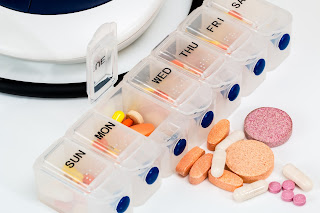Free Dose Combination Therapy Can Replace Fix Dose Combination Therapy
 |
| Free dose combination |
Read Also: Effect Of Taking Drugs Using Soft Drinks
Fix Dose Combination (FDC) Therapy
The use of FDC started in the 1960s. The first product was a combination of two antihypertensive agents to treat hypertension. The result was positive. When the world health organization (W.H.O) first started the essential drug list, they included seven FDC in the list. Over the years, more have been added such as artemisinin based combination therapy, highly active antiretroviral therapy, tuberculosis FDC among others.Most of the FDC approved by WHO are for drugs that need to be started off like that as first line therapy. The main reason WHO is encouraging the use of FDC is to fight resistance of microorganisms to single therapy which have been observe. Most of those drugs, you hardly find a free combination right now as the world is trying to phase them out. A good example is artemisinin based combination therapy. However, majority of the other FDC currently in the market now should not be started as first treatment. It is best to begin with a single drug and observe patient response. Adding another also require close watch. After getting a standard dose of both the free dose combination, a FDC with same strength can be prescribed.
However, there are some more advantageous to it
Advantages Of Fix Dose Combination Therapy
1. Compliance and adherence: most patients will take a single daily drug than multiple drugs with increase frequency. The reason is simple. Most patients don't fancy taking drugs to work. They don't like it when their colleagues notice they are on drugs. They wish to take it at home. So they most likely will comply with a morning and night dosing. Also, the fear of swallowing so many drugs can even turn some off. Understanding the dosing of many drugs can complicate matters for those on free dose combination therapy.2. Less side effect: most FDC use the lowest possible strength for each of the active. This invariably translate to lesser issues with side effects.
3. Cost: though it is more expensive than free combination, the direct medical cost is cheaper. Consider leaving your home to get one of the free combination today and notice that the second one will finish tomorrow, you have to go the next day with another transport to get the second one. As they say, time na money. The time you spend in buying both drugs two different days is enough to make some more money.
4. Abuse: some FDC were designed to curb drug abusers. For example, the drug atropine was added to diphenoxylate to deter drug addict from abusing it. So far, it works.
Disadvantages Of Fix Dose Combination Therapy
1. Dosing: individual drugs come in different strengths. For example, amlodipine, a blood pressure lowering drug come in 5 and 10mg. If non of this strength works to bring down the blood pressure, a second blood pressure lowering drug can be included. If lisinopril is the drug of choice, the strength to be added with either be 5 or 10mg because that is the strength it comes. It is a difficult situation for manufacturer to produce a FDC with all strength. What is obtainable is amlodipine/lisinopril 5/5mg. It is not impossible but difficult to include the other combinations of 5/10mg, 10/5mg or 10/10mg. This is the main reason there is lack of flexibility in prescribing FDC because individual variation is there.2. Dangerous in case of non compliance: if a patient decide not to take one of the free combination, at least a single one will do some little activity. However, if the drug is a FDC and the patient stop it, it can be fatal. This happens when one of the free dose combination drug finish and the other is still available.
3. Adverse drug reactions: if a patient is on a free dose combination, it is possible to track down the cause of an adverse drug reactions. However, this is not the case with a FDC therapy as the culprit cannot be identified.
4. Cost: FDC is usually very expensive when compared to the overall cost of the free combination.
From the above advantages and disadvantages, the FDC increase effectiveness to some extent. But that does not increase its efficacy. Using free dose combination with the right dose and strength give the same therapy value just like FDC. That means that when a FDC is not available, a patient can fall back to the free combination using same strength at the right dose. The therapeutic effect is the same. The major problem is with adherence. But when a patient shows some sign of compliance, it is better than leaving without it.
Read Also: Putting Drug Inside Effect Can Affect The Effect Of The Drug
So many patients have had to stay out of drugs for days looking for a particular FDC because the medical doctor forbid them from using free dose combination. This is even worst as they should know the implication of such action. As a pharmacist, we know the benefits as well as the risk. The only drug that should be stress on like that are drugs with high probability of having resistance issue such as artemisinin based combination therapy.
Share On Social Media With Family And Friends To Show You Care!

Comments
Post a Comment
Please have your say